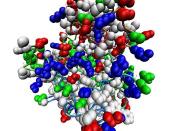Dwarfism is a genetic abnormality, that results in short stature. Most people consider dwarfism to be an adult height of four feet ten inches and under. Someone can develop dwarfism from different genetic, and other conditions. It is estimated that between one in every 14,000, and one in every 27,00 people are born with dwarfism each year.
There are many different conditions that cause dwarfism. Some of these conditions are a bone disorder called skeletal dysplasias. The skeletal dysplasias are separated into two different groups, Short-trunk, and Short-limbed. More than 500 different skeletal dysplasias have been discovered. The most common skeletal dysplasia is called achondroplasia, and occurs in one in every 20,000 births in the us, and affects about 80% of all people with dwarfism. Dwarfism occurs in all ethnic group. Any two average size parents can have a child with dwarfism. Most causes are genetic, resulting from a spontaneous mutation, or can be inherited from the parents.
In a mutation a single normal gene in a chromosome suddenly mutates, which results in the specific condition. The mutations occur during pregnancy, and is the most common reason that two parents of average size can have a child with dwarfism. When dwarfism is inherited both parents have a recessive gene that produces a dwarfism causing condition, and both pass it on to the child, the child will have that condition.
Symptoms that occur in most types of dwarfism are short stature, and shorter limbs, like arms, legs and fingers. These are the most recognizable. Others may include an increased risk of ear infection, and hearing loss, increased head size, a prominent forehead, apnea, which is a stop in breathing, while asleep, small ribcage, a curved and twisted spine, difficulty bending, and straightening elbows, being double jointed, and a delay in...


